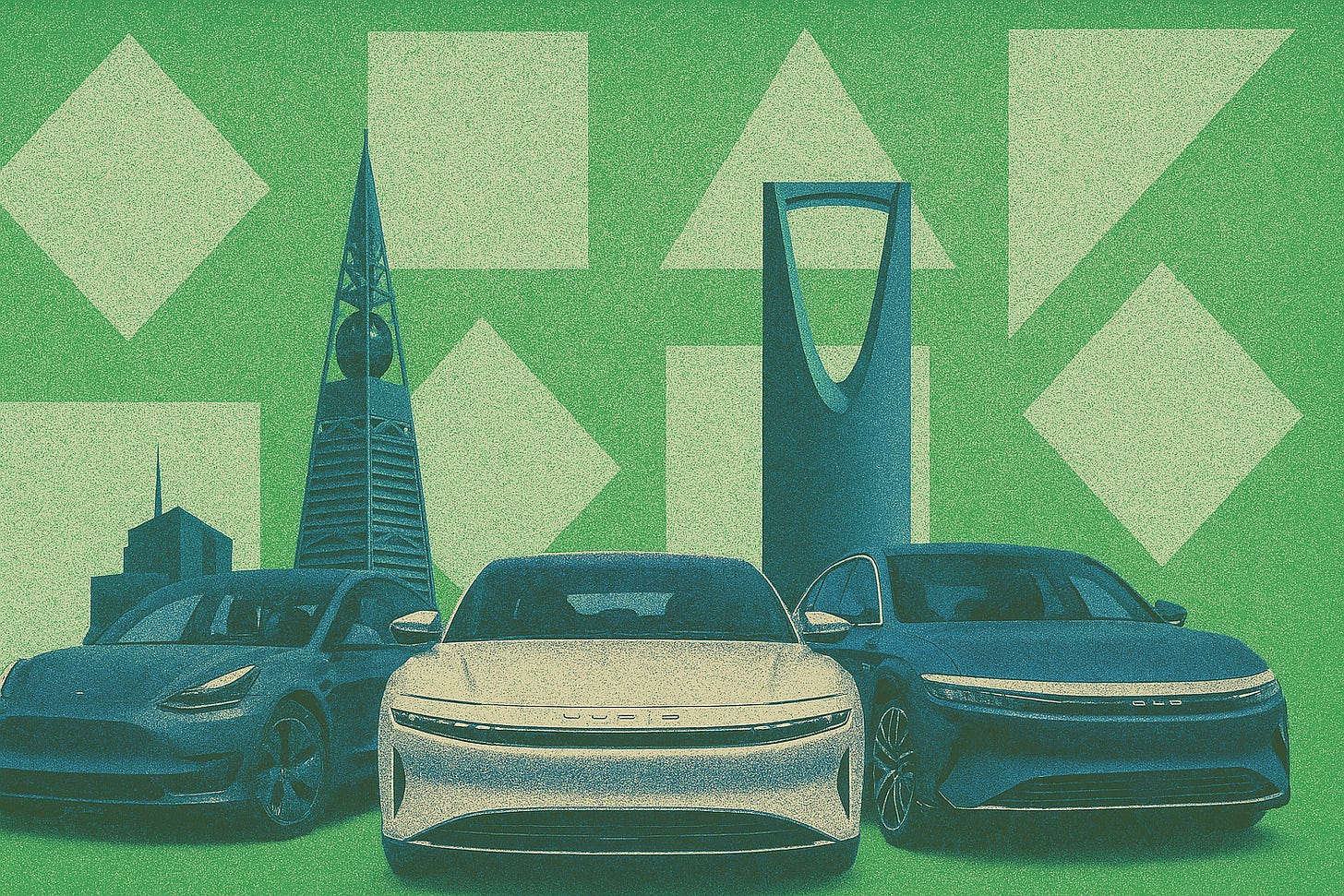Tesla and BYD bet on Saudi EV - Kingdom’s latest test drive?
The Saudi–Tesla story has been charging quietly for a while.
It’s not exactly surprising that the Cybertruck is making its way to the Kingdom — but the timing, the choice of model, and the broader EV context make it worth paying attention to.
Tesla isn’t showing up in isolation. With BYD entering through a deal with Aramco and Ceer building out local manufacturing, the EV race in Saudi is getting crowded — fast.
Last week, Tesla confirmed it will begin delivering Cybertrucks to Saudi Arabia, the UAE, and Qatar starting late this year — its first foray with the model outside of North America.
On the surface, it seems like an odd choice. The Cybertruck, plagued with production delays and underwhelming sales, isn’t exactly the breakout EV success Elon Musk had promised. And yet, Saudi — a market with limited EV adoption and sparse charging infrastructure — is now on Tesla’s map.
So, why now? And what does it say about the wider EV play in the Gulf?
📉 A cold start for the cybertruck
Let’s look at the numbers.
Tesla has sold fewer than 50,000 Cybertrucks globally since launching in 2023 — far below Musk’s initial goal of 200,000 units per year. According to Cox Automotive, only 6,406 trucks were sold in Q1 2025. Some production targets have already been revised down.
While Tesla’s push into Saudi Arabia may seem strategic, it also signals a shift in priorities:
The company is now chasing demand — not just generating it.
Saudi Arabia, for all its differences, may offer Tesla what China and Europe currently can’t: an open door.
⚙️ A bigger EV play is in motion
Tesla isn’t the only one moving in.
Just this week, Saudi Aramco signed a development deal with BYD, China’s EV powerhouse, signaling a growing appetite to not just import EVs — but build the ecosystem around them.
Meanwhile:
Ceer, Saudi Arabia’s own EV brand, awarded a $1.3B contract to a local developer to build its manufacturing complex.
The Electric Vehicle Infrastructure Company (EVIQ) is building 5,000+ chargers across 1,000+ locations by 2030.
And Riyadh’s own goals are clear: 30% of cars in the capital should be electric by the end of the decade.
Put all of this together and you have a Kingdom that, at least on paper, is trying to engineer a competitive EV market — one that includes foreign players but also builds domestic muscle.
🤔 …so why the cybertruck?
Coming back to Tesla. Why launch one of its most polarizing models — a 6,000-pound stainless steel wedge — in an EV-scarce market?
There’s a practical angle:
The Cybertruck’s design and dimensions don’t play well in Europe or China. Regulations, urban layouts, and consumer preferences have all been roadblocks. That leaves Tesla looking for open markets, and Saudi — with wide roads, deep pockets, and an appetite for novelty — is one of the few remaining options.
There’s a strategic one, too.
Saudi Arabia is increasingly positioning itself as a platform for companies to pilot new ideas — especially in sectors tied to its broader transformation plans. EVs fall neatly into that category.
🔌 Signals to watch
There’s a lot of noise around EVs in the region right now — some of it real, some of it wishful. But a few signals are worth watching:
Will EV adoption among consumers follow the infrastructure buildout?
For now, the EV market in Saudi is still small. But policy incentives, private sector partnerships, and localized manufacturing might change that.
Can Ceer / Lucid or any homegrown player scale fast enough to matter?
Building a brand is hard. Building an auto brand is even harder. Whether Ceer gains market share — or simply boosts localization stats — is still unclear.
Will Saudi be a proving ground for international models that don’t work elsewhere?
The Cybertruck might be the first of many vehicles that arrive in the Gulf not because they’re global hits — but because the region gives them a second shot.
🎯 Final thought
Tesla showing up in Saudi Arabia might seem like a surprise — but it’s not the first time the two have crossed paths. Back in 2018, the Saudi Public Investment Fund was reportedly in talks to help take Tesla private. That deal never happened, and things got messy.
Fast forward to 2025, and Tesla’s now opening showrooms in Riyadh, Jeddah, and Dammam. It’s not just looking to sell cars — it’s back in the market, on new terms.
At the same time, Saudi Arabia is betting big on its own EV future: BYD is entering through a development deal with Aramco, Ceer is building its first manufacturing plant, and the government says 30% of Riyadh’s cars will be electric by 2030.
This isn't about how many Cybertrucks get sold — it’s about whether Saudi Arabia becomes one of the few places where the global EV rollout actually gains traction.
Is Saudi Arabia about to become a central hub in the global EV race, or will these developments serve as isolated ventures in a challenging market?




